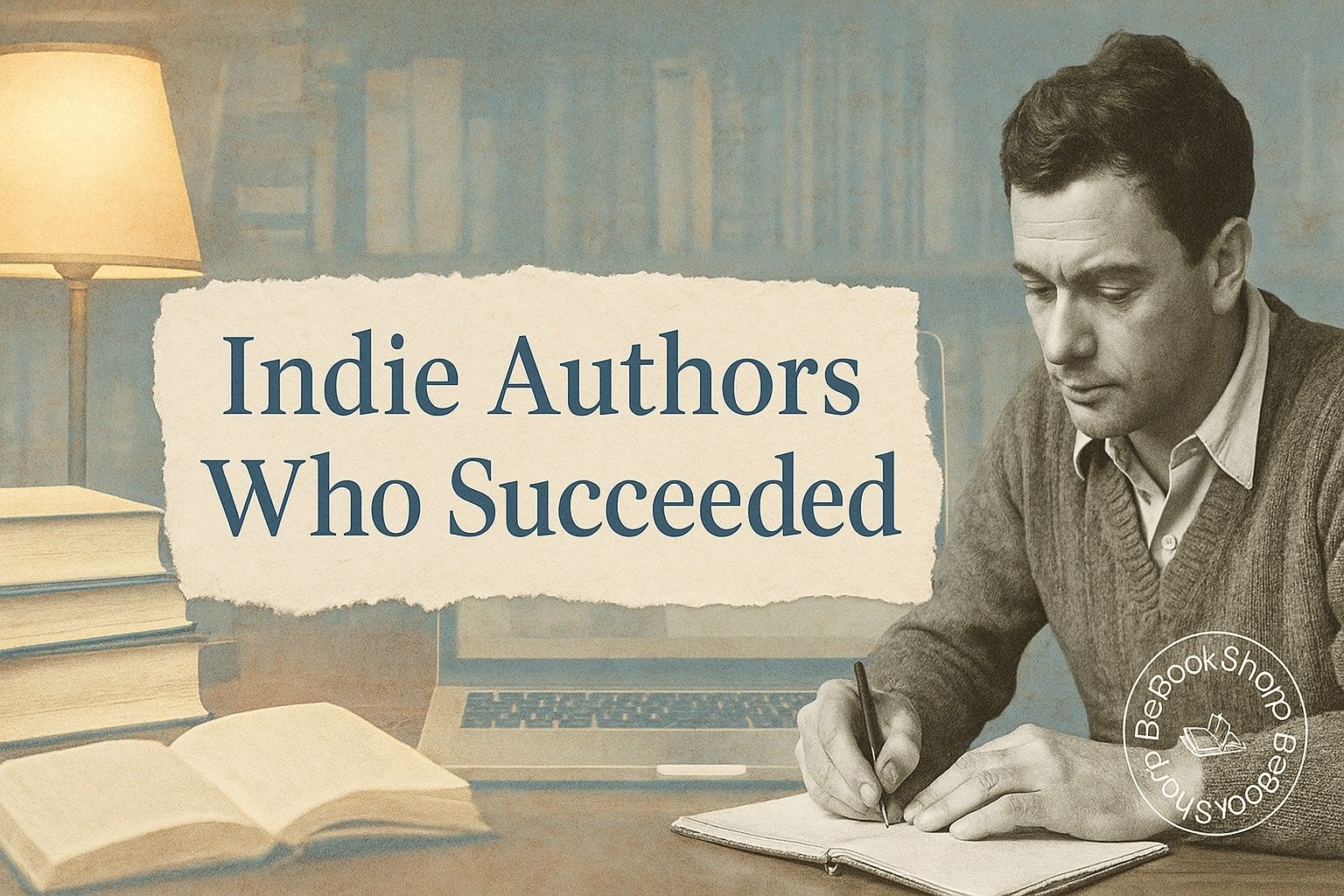
For some authors some days it feels like the door will never open. You’ve done the work, and the quiet is deafening. Before you decide the story ends here, let me introduce a few authors who stood in that same hallway, tired, uncertain, but they found a crack of light. It didn’t arrive with fanfare, but started on websites like Goodreads, in the quiet places where readers actually gather. Lists, shelves, a quote that someone couldn’t help but save. Small signals that turned into something, much, much bigger! I’m sure you’ve heard of many of these books, so keep reading to find out how they made it big, then scroll lower to find out how you can too.
1) Andy Weir — The Martian
Weir’s journey started scrappy. Free chapters on his site, then a $0.99 Kindle deal, until readers hauled the book onto their Goodreads shelves en masse. The snowball showed up where it mattered. Thousands of status updates, science-nerd pull-quotes in reviews, and the Goodreads Choice Award for Science Fiction in 2014. That visible, ranked validation told casual browsers “this is the one,” which helped grease the wheels for the re-release and, later, the film. If you’re indie, note the sequence: serial → Kindle → Goodreads momentum → legitimacy signal for the trade.
2) Hugh Howey — Wool
Wool looked like a traditional Cinderella story, but Goodreads was the ballroom. Relentless list placements and quote-sharing kept it visible long enough to reach the fabled print-only Simon & Schuster deal. Readers weren’t just rating it; they were pulling out quotes, tagging shelves like “post-apocalyptic,” and linking lists across blogs. In practice, that meant sustained discovery after the initial spike. The result was a contract model that left his e-rights indie. That only happens when reader-proof is undeniable.
3) Michael J. Sullivan — Riyria
Sullivan’s early Riyria books thrived where fantasy fans actually browse, GR lists, read-alikes, and quote threads. He’s spoken publicly about how social platforms, and Goodreads in particular, helped readers find the series before Orbit stepped in. The lesson is durability. Lists create “ambient” reach, and quotes give newbies an emotional on-ramp. Put them together and you get the quiet compounding that winds up in a trade repackaging.
4) Susan Ee — Angelfall
Ee self-published, then watched Goodreads groups, Q&As, and heavily used YA shelves do exactly what a debut needs. They kept the book in conversation. Readers highlighted quotes, linked to those GR quotes in blog reviews, and filled Listopia pages with angel-apocalypse recommendations. That visible heat paved the way to Amazon Children’s Publishing and later territorial deals. Goodreads wasn’t a side-channel, it was the proving ground.
5) Mariana Zapata — The Wall of Winnipeg and Me
Zapata’s slow-burn brand fits Goodreads like a glove. Long quotes saved to “slow-burn-romance,” “sports-romance,” and KU-adjacent shelves, plus Listopia entries that keep resurfacing the book for exactly the right readers. Those underlined quotes, equal parts tenderness and grit, circulated in updates and reviews, selling the vibe in five seconds. That’s what turns a quiet indie into a perennial backlist mover.
6) C. J. Roberts — Captive in the Dark
Dark romance lives and dies on discoverability, and Goodreads Listopia essentially created the aisle signage. Captive doesn’t just appear on those lists, it charts near the top of multiple high-voter dark-romance lists, so newcomers repeatedly “meet” it while browsing. Reviews quote the most controversial lines, which drives curiosity clicks (and, yes, debate). That provocation was part of the engine.
7) Aleatha Romig — Consequences
Romig’s series climbed a stack of GR lists. Romantic-suspense, dark/controversial romance, controlling anti-heroes, so it met its target readership from different angles. That cross-shelf triangulation matters. It tells the algorithm, and human list curators, exactly where to keep recommending. Meanwhile, reader likes on quotes (the gasp-moments) circulated in updates, acting as mini billboards that re-sell the hook months after launch.
8) Anna Zaires — Twist Me
Here, Listopia did the heavy lifting. Twist Me sits high on “Best Dark Books Ever”/“Dark, Twisted, Abusive Romance” lists where thousands of voters pool attention. Readers save quotes and paste them into updates like postcards from the book’s mood. That live, in-ecosystem attention isn’t just vanity, it perpetuates surfacing in browse views, which is how indie series find their next 10,000 readers, and the next, and so on.

9) Josiah Bancroft — Senlin Ascends
Bancroft’s path is practically a Goodreads case study. Self-published, boosted by GR power reviewers and SPFBO chatter, then acquired by Orbit. The crucial bit is causality. The early Goodreads reviews didn’t just rate, they evangelized, quoting aphoristic lines and linking lists so other fantasy browsers kept bumping into Senlin. Visibility bred credibility, credibility unlocked the trade door.
10) Becky Chambers — The Long Way to a Small, Angry Planet
Kickstarter got the book made, Goodreads made it move. Cozy-SF lists consistently slot it at or near the top, and readers highlighted the kind of quotes everyone wanted to bring into their own life. Those underlined quotes function like a mission statement people can pass along, which is why the book kept floating to new readers until Hodder/Harper re-published. It’s the soft-power version of going viral.
11) Michael McClung — The Thief Who Pulled on Trouble’s Braids
McClung’s SPFBO win gave the book a little crown graphic to wear around Goodreads, but the day-to-day momentum came from list presence and quotable noir-snark that readers passed around. Each time a blogger embedded a GR link to a quote or list, it created a breadcrumb trail back to the work. That’s how a lean indie fantasy becomes a community staple.
12) M. L. Wang — The Sword of Kaigen
Reader emotion is the commodity here. Goodreads reviews lift whole passages—grief, resolve, a mother’s fury—and those lines echo across shelf clusters (“wuxia,” “military-fantasy,” “tear-jerker”). Add the SPFBO win and you have an attention flywheel. New browsers see the award, read a quoted line, add the book. That’s great discoverability right there.
13) Lindsay Buroker — The Emperor’s Edge
Buroker’s rise looks like “a thousand tiny doors” opening on Goodreads. Quippy quotes that turn into shareable screenshots, evergreen appearances on indie-fantasy lists, and a series ecosystem that GR’s “readers also enjoyed” loves. This is the long game—consistent shelving + memorable lines = permanent browse exposure.
14) A. G. Riddle — The Atlantis Gene
High-concept thrillers win or lose on the “one line you repeat to a friend.” Goodreads captured those lines, and the techno-anxiety quotes spread via reviews and blog embeds that cite GR as the source. Once multiple Listopia pages converged around the series, the browse pages started doing passive marketing on his behalf that catapulted this success.
15) Rob J. Hayes — Never Die
For a Western audience, “wuxia” can be a hard label—until Goodreads shelves do the translation. Readers filed Never Die under wuxia/xianxia + Asian-inspired fantasy lists, then broadcast crisp, aphoristic lines in updates. That told the right readers where to find it, and once they arrived, they found more Hayes via GR’s series web.

16) Travis Baldree — Legends & Lattes
This is what it looks like when Listopia carries a book. Cozy-fantasy lists crowned it, and readers kept sharing the gentlest lines—mini-manifestos about second chances and found family. Those screenshots (often with GR links) made the book feel safe to try, even for non-fantasy folks. By the time the big house moved, the Goodreads footprint had already done the category-making.
17) Anthony Ryan — Blood Song
Ryan self-published and let Goodreads do the whisper campaign—big-feeling quotes, “best of epic fantasy” lists, and reviewers who treated it like a secret you share. That signal concentrated fast enough that ACE/Penguin moved. If you study the editions timeline on GR, you can see the handoff from indie to trade.
18) Amanda Hocking — Switched (Trylle)
Before “indie success” was a cliché, Hocking’s YA romances sat everywhere on Goodreads—quoted, re-shelved, cross-listed. That wide, messy visibility (plus Kindle velocity) is how a self-pub outlier becomes a mainstream example; GR gave her early work a public scoreboard and a chorus of quoters.
19) S. T. Gibson — A Dowry of Blood
Dark, dramatic one-liners practically beg to be highlighted—and Goodreads makes that highlight public. As quotes piled up, the book found its natural shelves (gothic, dark-romance, feminist retellings), which turned the browse carousel into a magnet. That ambient presence then supported wider distribution and ongoing backlist pull.
20) Andrew Rowe — Sufficiently Advanced Magic
Progression fantasy is a Goodreads-anchored scene. Rowe’s book built momentum via shelf clustering (progression/cultivation/litrpg-adjacent) and the kind of wry quotes readers paste into updates. That ecosystem keeps the book discoverable long after ads switch off—and funnels curious newcomers into a series with strong completion rates.
If you’re tired of shouting into the void, here’s the quiet truth, Goodreads is where indie / small press breakthroughs still begin. Not with luck, but with the right kind of momentum. The authors listed above didn’t win because they had bigger budgets, they won because Goodreads was a platform that made them findable, quotable, and inevitable. That doesn’t happen by accident, and it doesn’t happen by doing everything yourself. It can happen when a campaign is engineered to get your book into enough hands of your target readership, who then place your book on the right Listopia lanes, anchor it to the shelves readers actually browse, and seed lines worth saving so the community carries your story forward. That’s what our promotions are built to do. Turn Goodreads into a live engine for discovery while you keep writing. If you’re ready for a path that feels possible, and measurable, start here. We’ll handle the architecture, you keep the voice.
Contact me today and I’ll send details of how you could join in the success of the authors in this article.
Kathy K,
